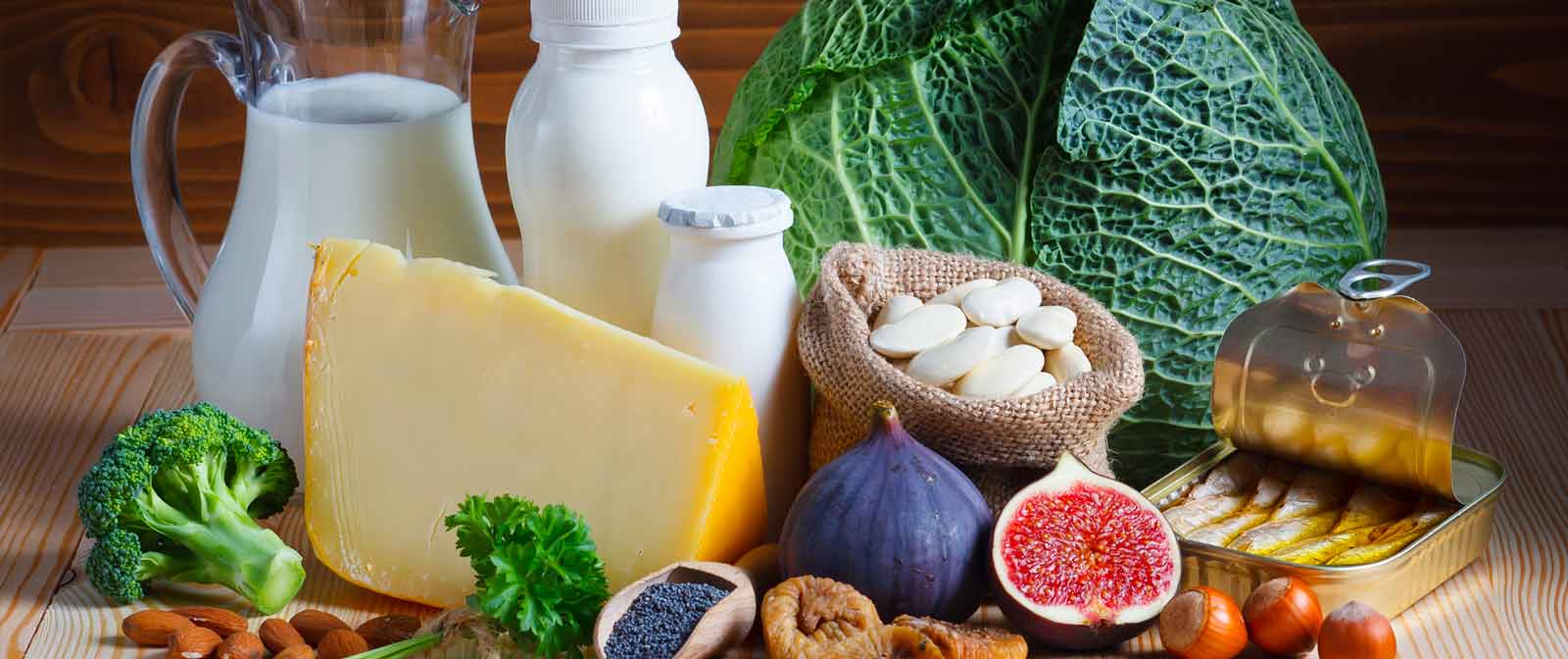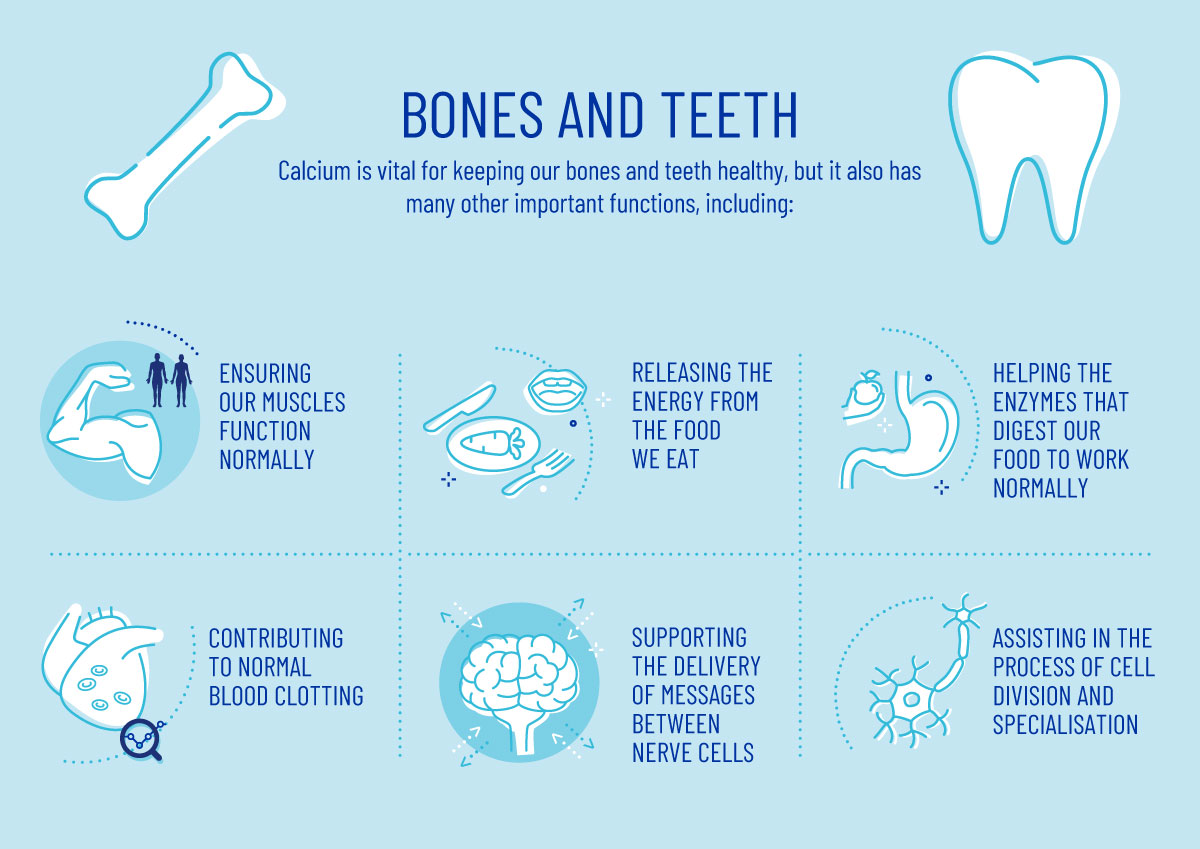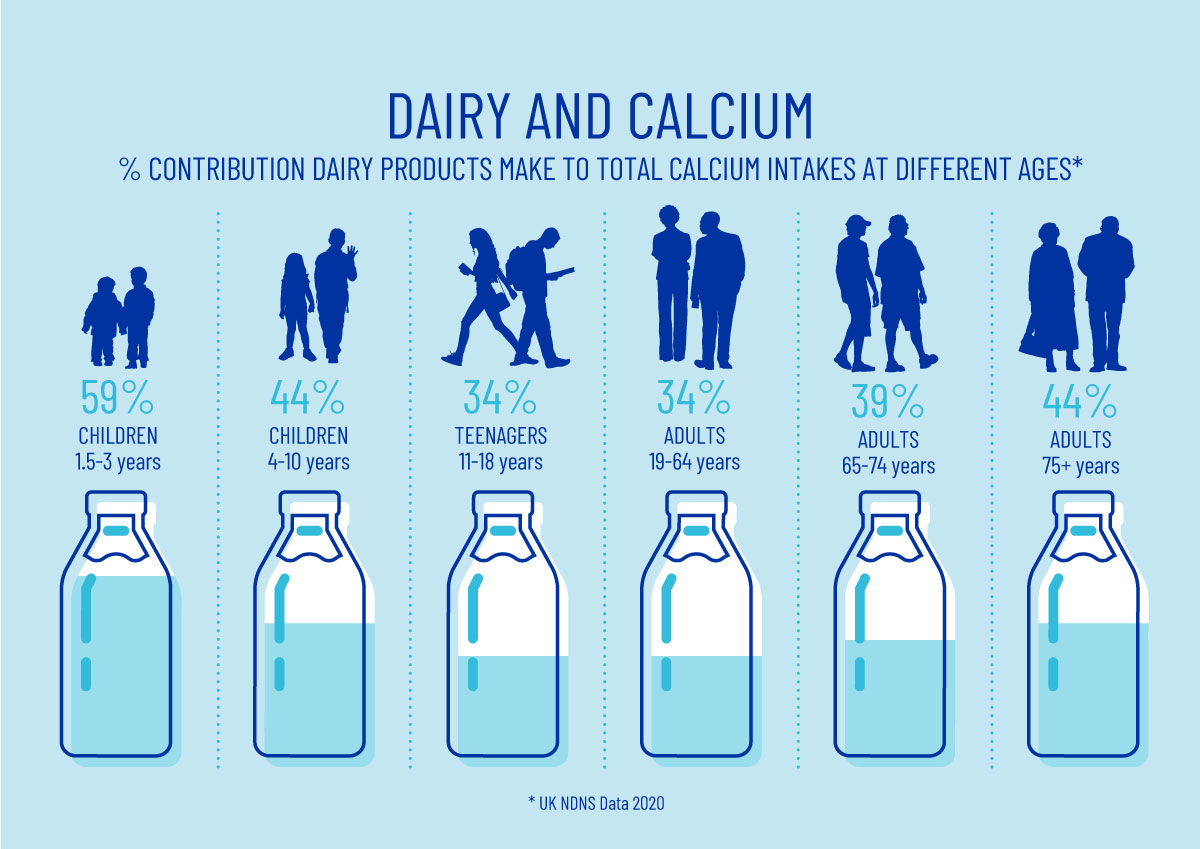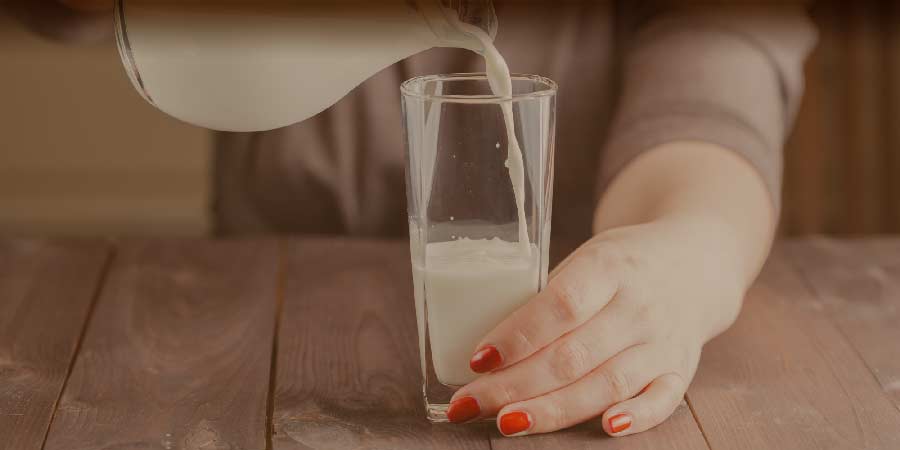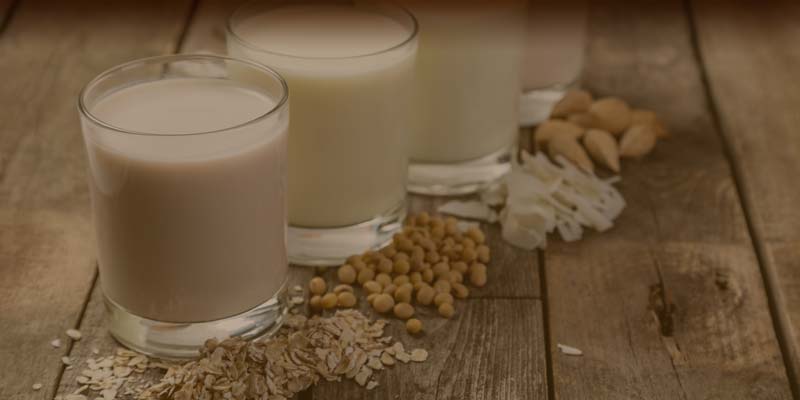Calcium is the nutrient many of us associate with dairy and with good reason – it is one of the most readily available calcium rich foods around. In the UK, milk, cheese and yogurt contribute more than a third of the calcium in our diets. And while calcium is most famously known for supporting our bones, it’s needed to keep many other parts of our body healthy too.
WHY WE NEED CALCIUM
IT’S BRILLIANT FOR BONES
Calcium is needed for the growth and development of bones in children, and for maintaining healthy bones throughout life.
It’s vital to get enough calcium at every stage of life to help keep our bones healthy, but there are certain times when it’s even more important. The calcium in milk, cheese and yogurt can help us all meet our varying calcium needs through life.
During childhood and the teenage years
During these years, bones grow really quickly and large amounts of calcium are deposited in them to make them strong. In fact, by the time girls are 18 years old, and boys 20 years old, around 90% of their peak bone strength and density has already been achieved. That’s why between the ages of 11 and 18 years, we have higher needs for calcium than at any other time in our lives.
During pregnancy
Although the need for calcium doesn’t increase during pregnancy it’s vital that mums-to-be have enough of this nutrient to support the growth of their developing baby.
When breastfeeding
Breastfeeding mums are feeding their babies as well as themselves so it’s no surprise that requirements for many nutrients increase at this time of life. The need for calcium when breastfeeding is considerably higher (almost 70%!) to support the baby’s rapidly growing and developing bones.
Around the menopause
It’s vital to get enough calcium to help minimise the losses in bone density and strength that naturally occur as we get older. In women, this is particularly crucial around the time of the menopause. The female hormone oestrogen helps to keep bones strong so when levels drop and the menopause is triggered, the rate at which women lose bone speeds up. In fact, women lose bone rapidly in the first few years after the menopause.
Calcium
booklet
Did you know?
Our bones keep growing and strengthening until our late 20s, when they are at their thickest and strongest. This is what’s called our peak bone mass. Then by our mid-30s, our bones start to lose calcium faster than they store it – and so gradually lose their strength. This is a normal part of getting older and it happens to everyone, but there are steps we can take through exercise and diet that can help to slow these changes.
The key is to make sure our bones are as strong as they can be at their peak. That’s why it’s so important to have plenty of calcium rich foods, such as dairy, in our diets in our younger years. Put simply, the more calcium that’s deposited in our bones in our first 30 years – and especially during childhood and the teenage years – the stronger our bones will be in later life and the greater the protection against osteoporosis. Looking after our bones also means regular weight bearing exercises, eating foods rich in bone building nutrients, and maintaining a healthy weight and lifestyle.
You can find out more about a healthy diet for bone health from the Royal Osteoporosis Society
IT’S TOOTH FRIENDLY
Eating a healthy diet and avoiding having sugary foods and drinks too often is important to help lower our chances of tooth decay. In particular, calcium has a vital role to play in helping to maintain normal teeth. Dairy products such as milk, cheese and yogurt which are naturally calcium rich, can also be good choices to have instead of foods and drinks that contain a lot of sugar – hard cheese, for example, is sugar-free, and milk is a nutritious and tooth-friendly drink.
For advice on keeping teeth healthy, including diet tips, visit the Oral Health Foundation website
BEYOND BONES AND TEETH
Whilst calcium is vital for keeping our bones and teeth healthy, it also has many other important functions in the body that you probably don’t know about. Here are the other jobs in our body that calcium helps with…
- Ensuring our muscles function properly: calcium sends signals from our nerves to our muscles to help them contract
- It contributes to normal blood clotting: calcium helps form a protein which helps us form a blood clot. Without calcium, this protein cannot be made, and our blood cannot clot
- It helps to release the energy from the food we eat by transforming energy from fats, for example, into energy molecules that reach all of our cells
- It supports the delivery of messages between nerve cells
- It helps form the enzymes that we need to digest our food
- It assists in the process of cell division and specialisation – a process that helps our body to make cells that carry out specific or specialised functions in the body. For example, in adults, generic stem cells can be ‘specialised’ to replace damaged cells in our heart or skin.
PERFECT PARTNERS
Calcium + vitamin D
Vitamin D is the perfect partner to calcium as this vitamin helps the body to absorb the calcium from foods. In fact, if we don’t get enough vitamin D, our bodies can’t make the most of the calcium in our diets.
We make vitamin D in our body when skin is exposed to sunlight. But in the UK, this can only happen between April and September when the sun’s rays are strong enough to do this. Between October and March our bodies can’t make enough vitamin D from sunlight so we need to rely on getting it from our diet and supplements.
However, only a few foods naturally contain vitamin D. The richest sources available are oily fish such as mackerel, salmon, herring and sardines, liver and eggs. Some mushrooms may also be enriched with vitamin D. Other foods such as breakfast cereals, bread and yogurts may be fortified with vitamin D, too – but make sure you check the label.
Because few foods contain vitamin D, it’s difficult to get enough from our diet alone, so the NHS advises all adults and children over the age of one to consider taking a supplement containing 10mcg of vitamin D every day, especially during Autumn and Winter. The NHS also gives specific advice on vitamin D for babies, based on whether they are being formula fed or breastfed, and recommends a daily 10mcg supplement of vitamin D all year round for some people because they may not be able to make enough from sunlight even in the Spring and Summer. These include…
- People with darker skin
- People who cover their skin even when outside in sunlight
- People who spend a lot of time indoors, for example, those who are housebound or in a care home
Find out more about
WHERE TO FIND CALCIUM
Dairy products are the main food group many of us associate with calcium and with good reason. In the UK, milk, cheese and yogurt are key sources of this nutrient. For example, in teenagers and working age adults they contribute more than a third of the calcium to our diets. During childhood and in our more senior years, dairy products are even bigger suppliers of calcium.
Calcium in dairy products
Regular fat varieties of milk, cheese and yogurt are good sources of calcium but don’t worry if you prefer lower fat varieties. Removing some or most of the fat from milk, cheese or yogurt doesn’t mean missing out on other nutrients, including calcium. In fact, low-fat dairy products tend to have slightly more calcium than whole milk products.
| Dairy product | Type | Calcium per serving (mg) |
| Milk (per 200ml) | Whole milk | 247 |
| Semi-skimmed milk | 247 | |
| 1% fat milk | 256 | |
| Skimmed milk | 260 | |
| Cheese (per 30g) | Cheddar | 222 |
| Reduced-fat Cheddar | 252 | |
| Red Leicester | 217 | |
| Double Gloucester | 198 | |
| Wensleydale | 168 | |
| Stilton | 98 | |
| Cheese products | Plain cheese spread triangle (17g) | 85 |
| Plain, reduced-fat cheese spread triangle (17g) | 82 | |
| Plain cottage cheese (120g/3tbsp) | 153 | |
| Plain, reduced-fat cottage cheese (120g /3tbsp) | 153 | |
| 1 processed cheese slice (40g) | 183 | |
| 1 processed cheese, reduced-fat slice (20g) | 128 | |
| Plain Yogurt (per 150g) | Low-fat yogurt | 243 |
| Fat-free/diet yogurt | 240 | |
| Whole milk yogurt | 300 | |
| Greek-style yogurt | 189 | |
| Fruit Yogurt (per 150g) | Low-fat yogurt | 210 |
| Fat-free/diet yogurt | 210 | |
| Whole milk yogurt | 183 | |
| Greek yogurt | 212 | |
| Fromage frais (per 100g) | Virtually fat free plain | 127 |
| Virtually fat free fruit | 87 | |
| Children’s fortified fruit | 140 |
Calcium beyond dairy
Calcium is found in other foods, including sardines (where the bones can be eaten), fortified bread, green leafy vegetables like spinach, kale, okra, rocket and watercress, beans, lentils, nuts and seeds. Some foods such as breakfast cereals and bread are also often fortified with calcium.
Not all calcium is equal
Often the amount of calcium in a typical serving of plant foods is much lower than in a typical serving of dairy. Plus, the calcium in most plants isn’t as easily absorbed and used by the body as the calcium found in dairy.
In particular, the nutrients in dairy foods are packaged together in a unique combination that lets our bodies get the absolute best from them and in a way that’s not always seen with plant foods or when calcium is added to foods to fortify them or in a man-made supplement.
Meanwhile, though some plant foods contain calcium, they also contain substances that make this nutrient less accessible to our bodies. For example, green leafy veg contain oxalates, which hinder the absorption of calcium.
‘Spinach, dried fruits, beans, seeds and nuts contain calcium but they also contain oxalates and/or phytates which reduce how much calcium your body can absorb from them……you should not rely on them as your main sources of calcium.’
British Dietetic Association.
Last reviewed: 03/2021
Next review due: 03/2023

